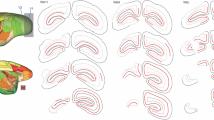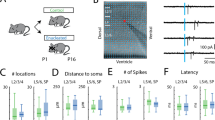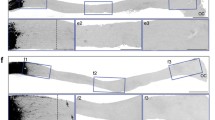Abstract
The mechanisms of neuronal network response to axotomy are poorly understood. In one of the favoured models used to study the fate of injured neurons in the adult rat visual system, appreciable numbers of retinal neurons survive optic nerve injury under conditions of microglia-targeted neuroprotection. Rescued neurons can regenerate their axons and become target-dependently stabilised after reconnection with their natural visual centres by means of a peripheral nerve graft, which, in addition to guidance, actively supports axonal growth. The mechanisms that control regenerative axonal growth and resynaptogenesis include coordinated cell-cell interactions between growing neurites and target cells in order to establish a meaningful reconnectivity. Here the function of the regenerating visual circuitry was first studied by monitoring the ability of animals to discriminate spatial patterns, and second by recording visual evoked cortical potentials (VEPs) in the same animals. These functions were correlated with neuroanatomical studies of the retinotopic organisation of regenerating axons. To achieve these goals, adult rats were behaviourally trained in a Y-maze to discriminate between vertical and horizontal stripes. Both optic nerves were transected, and the regenerating axons of one optic nerve were guided into the area of optic tract with a peripheral nerve graft according to the protocols of neuroprotection and simultaneous grafting, in order to enable large numbers of axons to reinnervate the major visual targets in the midbrain and thalamus. Postoperative testing of the animals showed a marked improvement of visual perception and behaviour. The VEPs of the same animals were measurable indicating a restoration of the visual circuitry including the ascending corticopedal connections. Neuroanatomical assessment of the fibre topography within the graft and the area of termination revealed a rough topographic organisation that may account for restoration of the function. These results suggest that interrupted central pathways can be functionally reconnected by providing a neuroprotective environment in combination with peripheral nerve grafts to by-pass lesions.
Similar content being viewed by others
Author information
Authors and Affiliations
Additional information
Received: 19 July 1996 / Accepted: 26 November 1996
Rights and permissions
About this article
Cite this article
Thanos, S., Naskar, R. & Heiduschka, P. Regenerating ganglion cell axons in the adult rat establish retinofugal topography and restore visual function. Exp Brain Res 114, 483–491 (1997). https://doi.org/10.1007/PL00005657
Issue Date:
DOI: https://doi.org/10.1007/PL00005657




